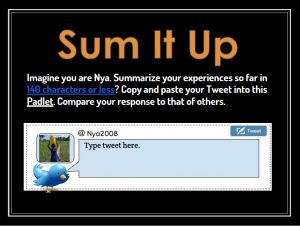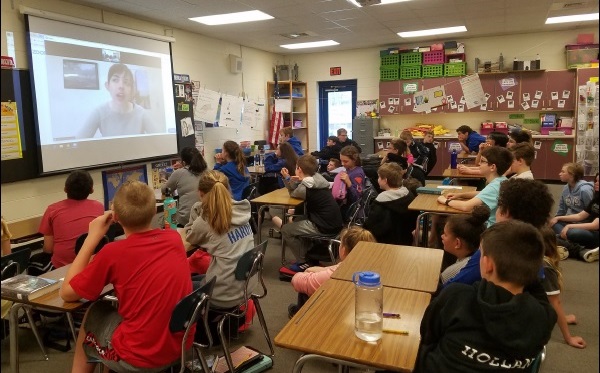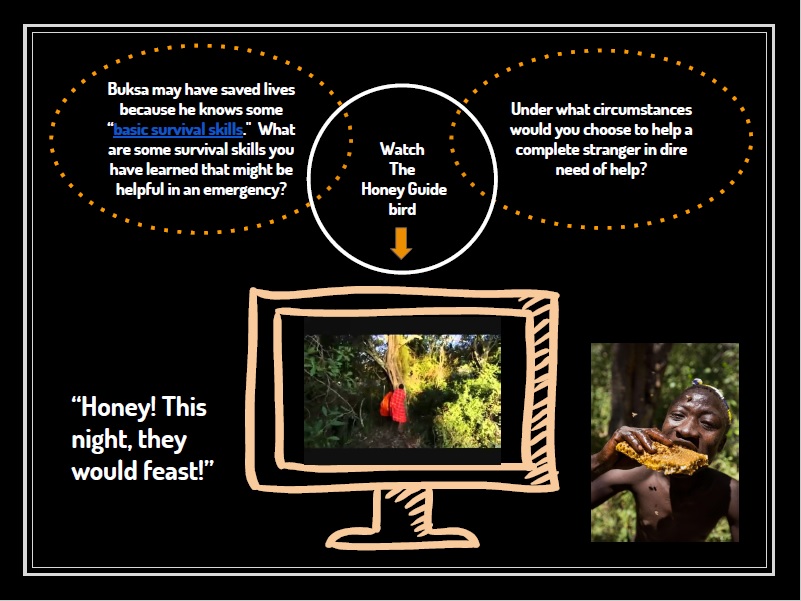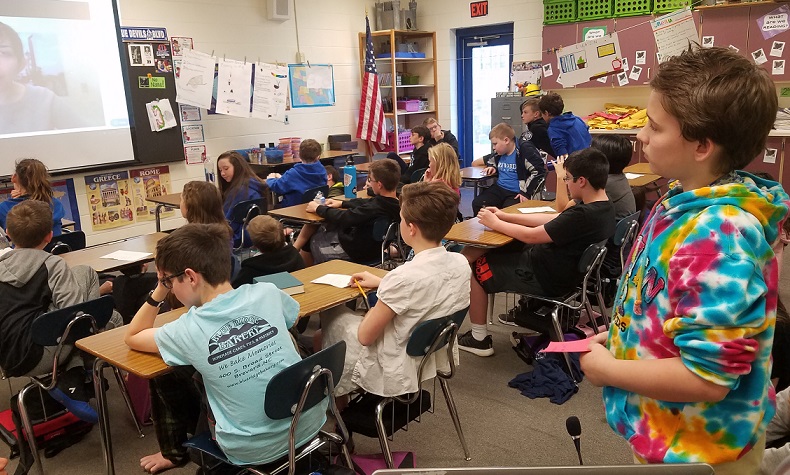Finding ways to engage students through a novel or a short story, while also developing critical reading comprehension skills is an important and challenging objective for many teachers. There is much to consider when selecting novels and stories for students, including historical implications, age/grade appropriateness, readability, genre and relativity. The challenge is not simply finding the right or most acclaimed book, it is also finding the right ways to use the content within and beyond the text to teach critical reading and thinking skills that students will use and expand upon throughout their lifetimes. When intentionally and strategically used, technology is a tool which can make this process more meaningful, engaging, and impactful.
Meg Buchannan, an Academically or Intellectually Gifted (AIG) teacher at Brevard Middle School co-taught a 5-week unit using the #1 NY Times Best Seller, A Long Walk to Water, by Linda Sue Park. The focus was using this non-fiction text to teach her students about global issues, improve reading and writing skills, while utilizing technology to connect ideas, thoughts and critical information from the story.


Meg created a guide that she used throughout the unit which gave students opportunities to write (type) about what they were learning from the story while reflecting on other student’s thoughts and ideas, within the classroom and outside (i.e. other schools and classes that were also studying this novel). Technology integration provided opportunities for collaboration that would not have be possible without its use. Throughout the unit, students used tech-tools such as Linoit, Padlet, Flipgrid, and Answer Garden to respond to questions, share ideas and to learn from others. Follow the links below for examples of work from the unit using the various tech-tools.
Examples from the unit:
Linoit- “I used to think…….but now I think….”
Answer Garden- Possible examples of symbolism from the story
Technology allowed the students to connect with someone who is directly impacted from the story, A Long Walk to Water. Lucie Parfitt, an employee of Water For South Sudan, participated in a Skype call with Meg’s students. This organization was founded by Salva Dat, who is also the main character in the Novel that the students were reading. Students were able to hear about the organization and ask questions. A clip from the Skype call can be seen below.
Video Clip (use link):
Skype call with Lucie Parfitt with Water for South Sudan

In addition to the tech-tools already mentioned, Meg used Google Classroom and Google Docs as a way to organize and manage student work. The unit guide that she created contained links to related Youtube and Ted Talk Videos, links to google maps to better connect the setting of the story to the students, and articles from CNN.com and BBC.com. Meg said initially, students had a hard time imagining life in South Sudan. Additionally, students entered this unit with a lack of awareness for global issues and this book and the additional resources helped to bring It all together in a meaningful and coherent way.

Unit Slides which contained links to related videos/content allowed students to better understand different cultures, ideas, and helped students to make connections with their own lives.

Meg came up with many original ideas (i.e. Gist Statements) for her unit guide and gives credit for inspiration to lesson activities via the following HyperDocs:
1. The “Pax” HyperDoc by Heather Marshall, Nicole Beardsley, Kimberlie McDonald, and Jennifer Diaz.
2. “The Lemonade War” HyperDoc by Karly Moura, Sean Fahey, and Michelle Waggoner.
3. Bits and pieces from multiple A Long Walk to Water lesson plans and resources, including a unit from Jennifer Wagner.

